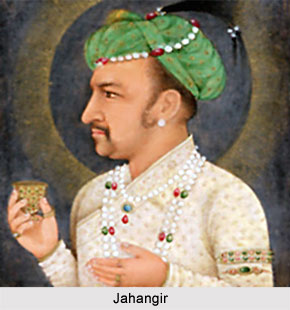 Revolt of Prince Khusrav, the eldest son of Jahangir, resulted from his desire of becoming the emperor after his grand father Akbar. Prince Khusrav was also the nephew of Raja Man Singh and the son-in-law of Mirza Aziz Khan, the two notable courtiers of Akbar. When Akbar died, both these nobles attempted to place Khusrav on the throne in place of Jahangir but as other nobles did not agree with them, they left the attempt. They accepted Jahangir as the emperor and were pardoned. Jahangir, however, kept Khusrav a semi-captive and removed Raja Man Singh from the governorship of Bengal.
Revolt of Prince Khusrav, the eldest son of Jahangir, resulted from his desire of becoming the emperor after his grand father Akbar. Prince Khusrav was also the nephew of Raja Man Singh and the son-in-law of Mirza Aziz Khan, the two notable courtiers of Akbar. When Akbar died, both these nobles attempted to place Khusrav on the throne in place of Jahangir but as other nobles did not agree with them, they left the attempt. They accepted Jahangir as the emperor and were pardoned. Jahangir, however, kept Khusrav a semi-captive and removed Raja Man Singh from the governorship of Bengal.
Khusrav was young then and could not forget the dream of becoming the emperor. He fled away from the fort of Agra on 6th April 1606 A.D. He proceeded to Lahore via Delhi. The strength of his followers increased to twelve thousand. He received the blessings of the Sikh Guru Arjun Singh. But the governor of the fort of Lahore refused to entertain him. Jahangir dispatched an army immediately to follow the prince and started towards Lahore himself. Khusrav turned back and fought a battle against the Imperial army at the plain of Bharowal. He was defeated and agreed to fly for safety. But he was captured while attempting to cross the Chenab River. The prince was simply imprisoned at this time while his followers were punished.
In 1607 A.D., while Jahangir was coming back from Kabul to Lahore, a conspiracy was hatched to murder him. Khusrav and few other nobles were a party to it. Prince Khurram came to know about it and informed Jahangir accordingly. Jahangir made a trough probe of it and when he came to know of all the conspiracies he punished them. Prince Khusrav was blinded this time, though afterwards, Jahangir arranged for his treatment and partially succeeded in recovering the sight of one eye of the prince. Khusrav however, remained prisoner as before. Prince Khurram asked Jahangir to handover Khusrav to him while proceeding on the Deccan campaign. Jahangir could not say no to him and
Khurram took Khusrav with him. Afterwards, in 1621 A.D., Prince Khusrav was murdered by a hired killer at the instigation of prince Khurram.
The revolt of Khusrav resulted in a few other revolts but all of them were of a minor nature and were suppressed. But this revolt seriously disturbed the relations of the Mughals with the Sikhs. Jahangir imposed a fine of rupees two lakhs on the Sikh Guru Arjun Singh as he had blessed prince Khusrav. He refused to pay the fine and was punished by death by Jahangir. The Sikhs regarded it as an oppression of their religion which resulted in the beginning of bitter relations between the Sikhs and the Mughals.



















